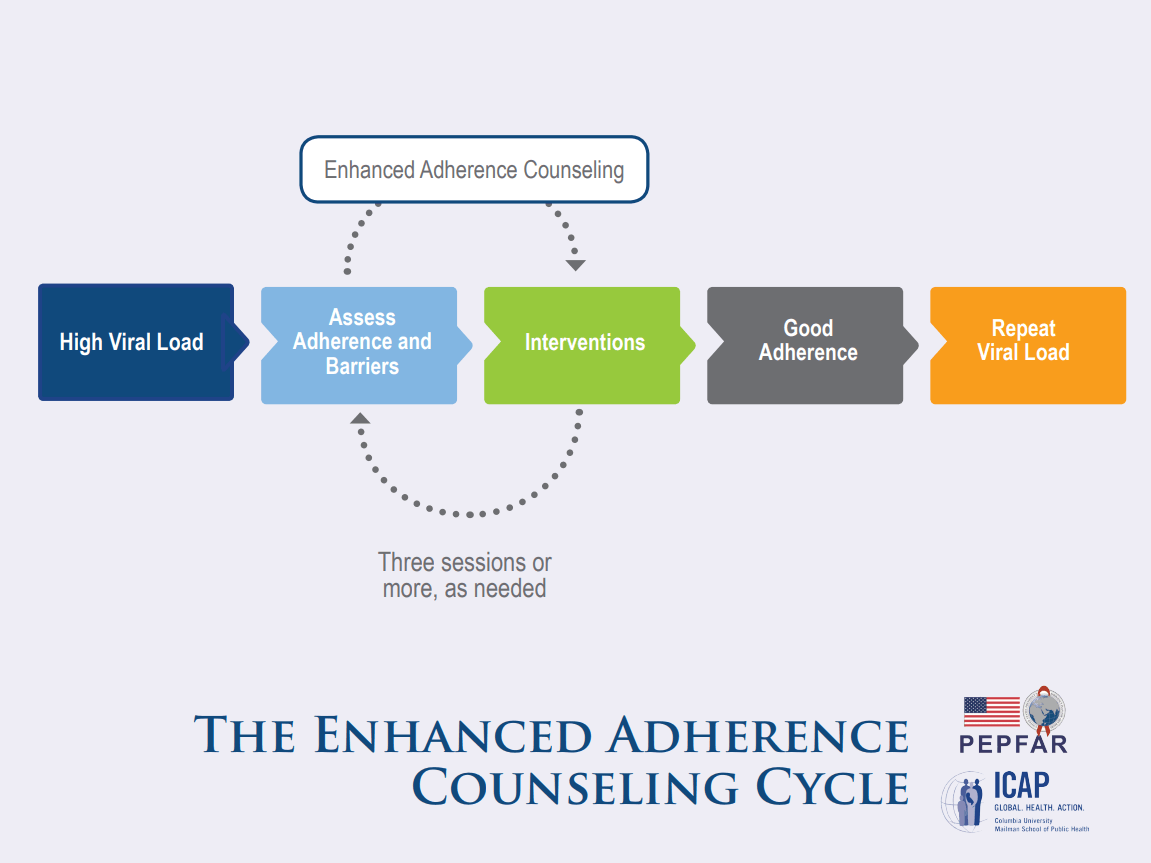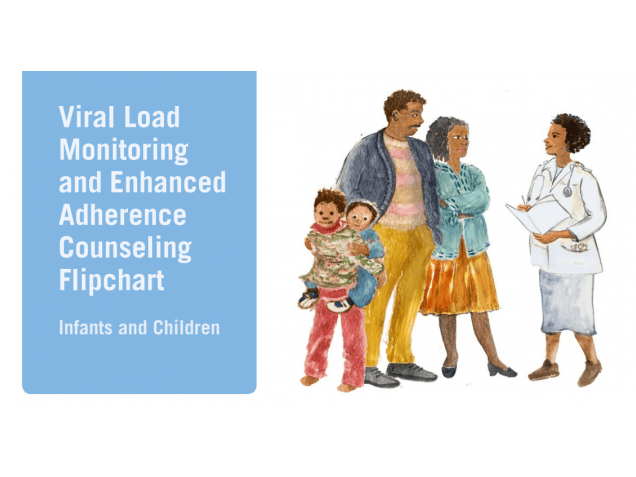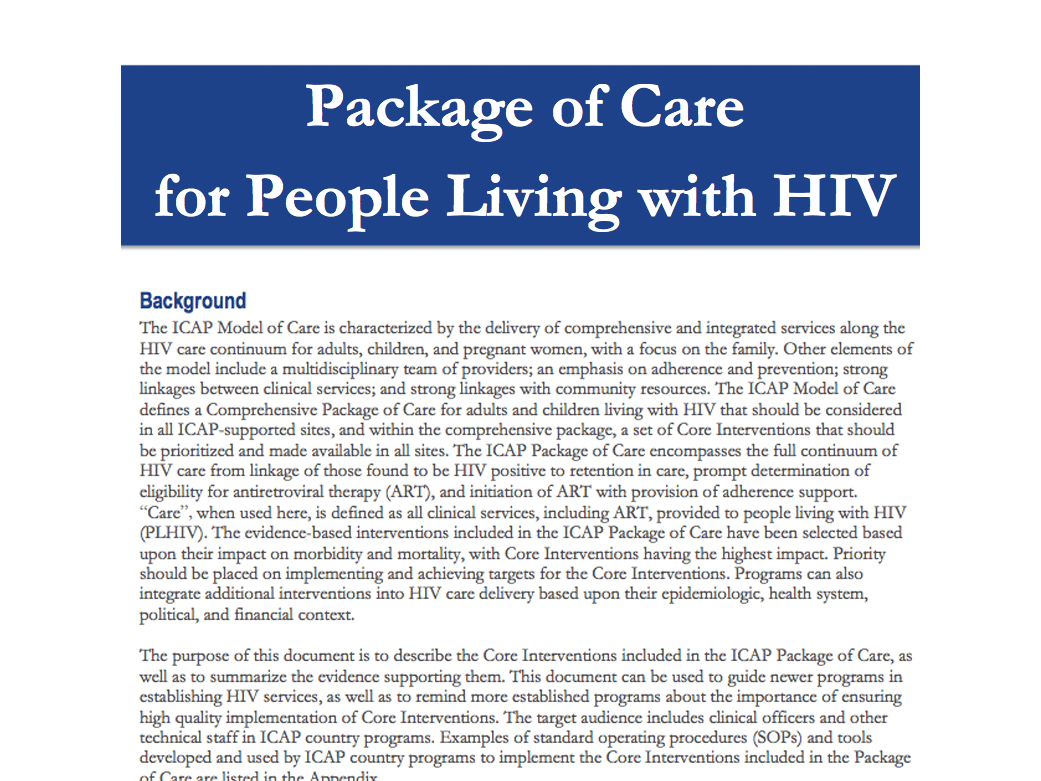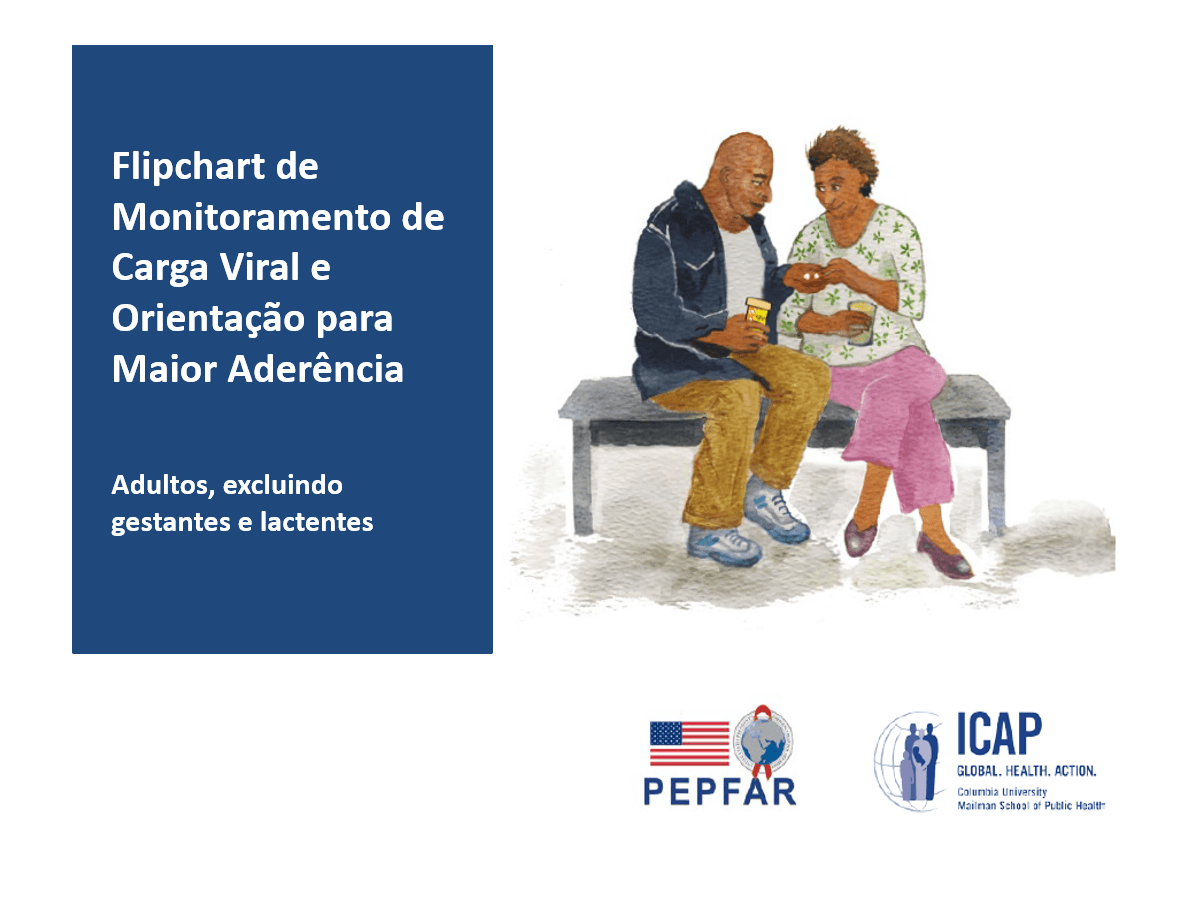NEW in October 2020: Version 2.0 of the Viral Load Toolkit includes content updates in light of “U=U”—the concept supported by overwhelming clinical evidence that “undetectable equals untransmittable” for HIV infection. This means that people with HIV who achieve and maintain an undetectable viral load by taking antiretroviral therapy (ART) daily as prescribed cannot sexually transmit the virus to others.
ICAP and the Centers for Disease Control and Prevention (CDC) have developed a package of tools to support clinical counseling on viral load and the use of viral load test results to improve patient management.
This toolkit contains:
- A 1.5-day training curriculum on viral load monitoring and enhanced adherence counseling
- A set of viral load monitoring and enhanced adherence flipcharts
- Tools and job aids for health workers
Enhanced adherence interventions are essential to the successful implementation of viral load monitoring and to ensure improved outcomes for patients on antiretroviral therapy.
These tools are easily adaptable for use in a variety of settings.
Also available in English, Portuguese, and Swahili
1.5-day training curriculum
This training curriculum is intended to build the capacity of health workers to conduct viral load monitoring and enhanced adherence counseling, using the tools included in this package. The curriculum contains eight modules and may be conducted over the course of one-and-a-half days. A brief facilitator’s guide is provided for each module, along with slides that should be used to guide the training. For speaker notes, please refer to the notes section under each PowerPoint slide.
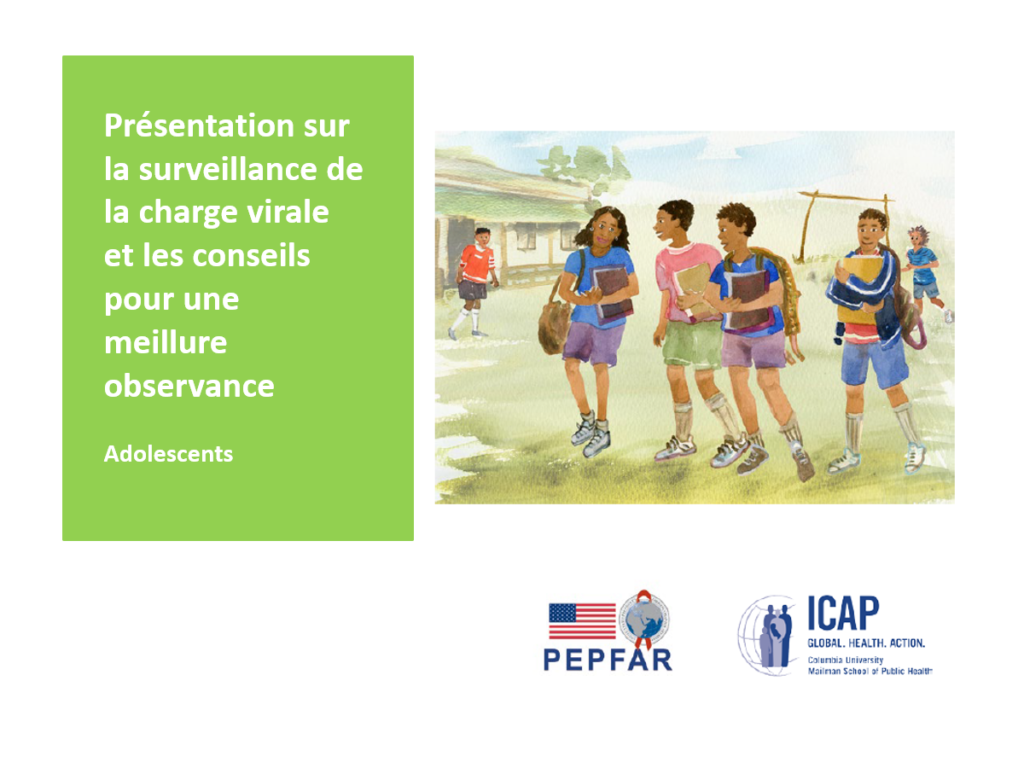
Flipcharts
These flipcharts are intended to help health workers provide information about viral load monitoring to patients (or their parents) and to explain the meaning of viral load results. In addition, they guide the provision of enhanced adherence counseling to patients with elevated viral load.
The flipcharts were developed for a range of health care workers (e.g., adherence counselors, doctors, nurses, pharmacists, community health workers) who work with patients living with HIV and their families in settings where viral load testing is being performed.
There are three versions of the flipchart: one for adult (non-pregnant nor breastfeeding) patients, one for adolescent patients, and one for infants and children. Each flipchart is available in English, Swahili, Portuguese, and French, and PowerPoint versions are provided to facilitate adaptation.
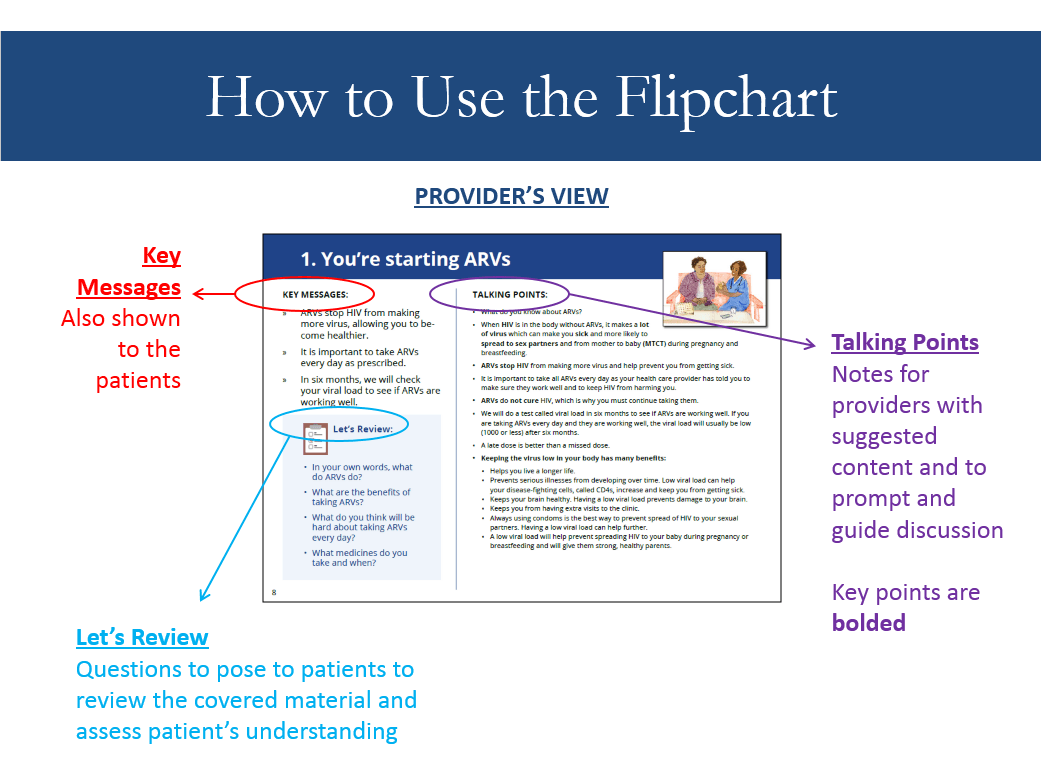
Tools and Job Aids
The following tools have been developed to support the implementation of viral load monitoring and enhanced adherence counseling:
- High Viral Load Register
- Viral Load Monitoring Standard Operating Procedures, which may be adapted for use in a variety of contexts
- Enhanced Adherence Plan Tool, which may be used to document findings from enhanced adherence counseling sessions
- National Viral Load Scale-Up Assessment Checklist, which provides a framework for assessing key domains (e.g., program management and standards) while preparing to scale up viral load monitoring at the national level
- Viral Load Scale-Up Facility Readiness Assessment Checklist, which provides a framework for assessing key domains (e.g., facility characteristics and tools) while preparing to scale up viral load monitoring at the facility level
- Viral Load Management Algorithm Wall Chart
- Viral Load Log Scale Wall Chart
- Enhanced Adherence Counseling Cycle Wall Chart
